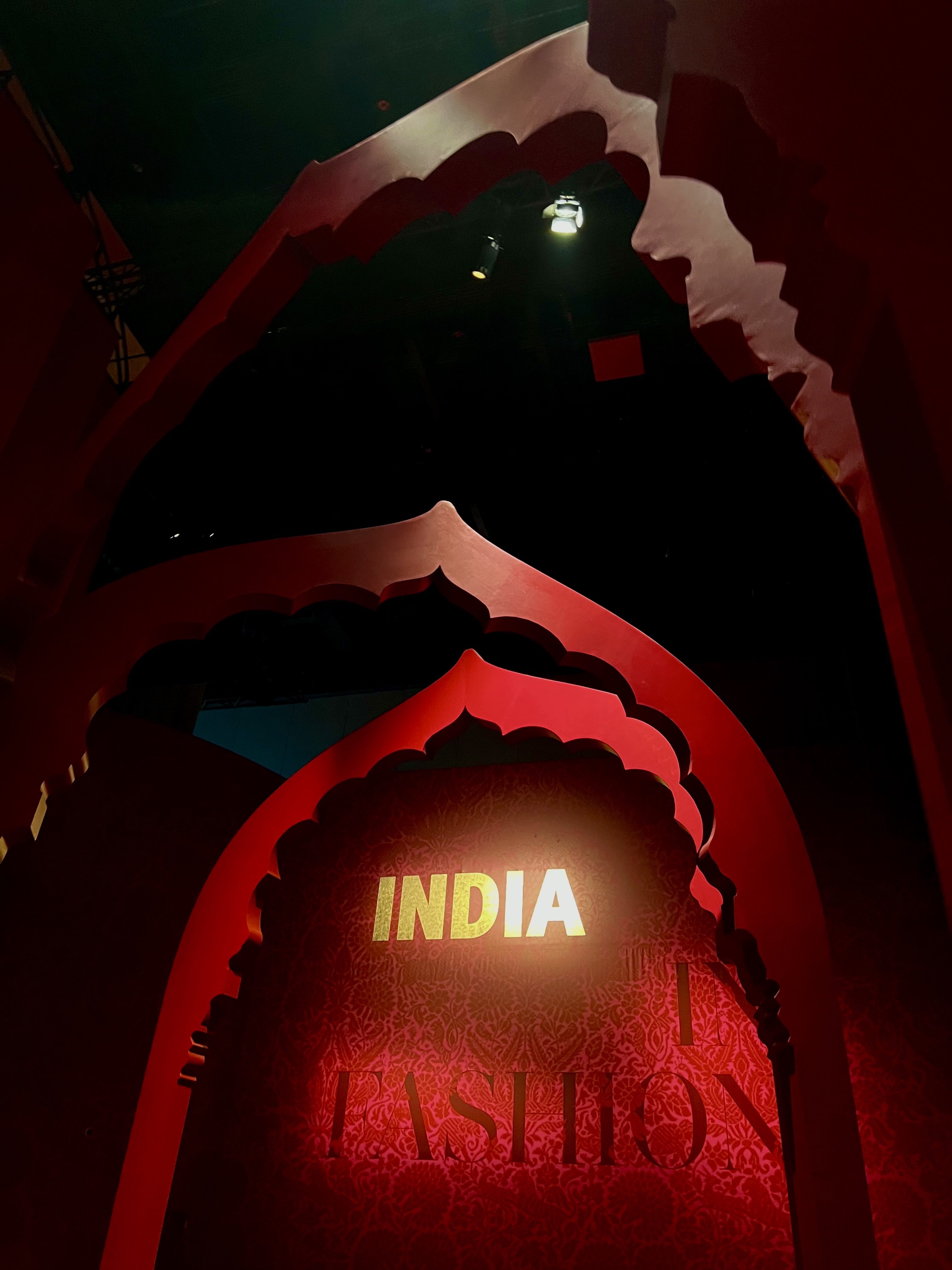
A peek into "India in Fashion" exhibition at NMACC part 1
The ‘India in Fashion: The Impact of Indian Dress and Textiles on the Fashionable Imagination’ exhibition is a celebration of the country's rich cultural heritage and its contribution to the global fashion industry since the 18th century. It features a range of Indian fashion, from traditional to contemporary, showcasing the country's diverse textile heritage, embroidery techniques, and artisanal crafts. The exhibition displays an array of garments, jewellery, and accessories that highlights the intricate workmanship and craftsmanship of Indian artisans and designers. The exhibition is curated by Hamish Bowles, designed by Patrick Kinmonth and architect Rooshad Shroff. Its grandeur reflects both the impressive display of contemporary Indian creativity and the intricate and nuanced colonial relationships that have developed over centuries. All-in-all the exhibition is an ode to the artisans and craftsmanship of India and how it has always transcended boundaries to reach people and designers around the world.

Segmented into different spaces, the exhibition has 10 sections: Introduction, An India of the imagination, gathered in a Mughal garden, The long shadow of Muslin, India’s allure meets the Paris couture, Valentino, The journey of the Sari, The great exhibition London 1851, The hippie trail, Traditions and innovations.
This exhibition differs from traditional museum displays as it does not follow a chronological timeline. Instead, it aims to explore India's significant impact on global fashion through key moments, including embroidery, textiles, silhouettes, and the use of vibrant colours.
INTRODUCTION
Starting off with the exhibition opener, the iconic outfit from S/S 2010 collection of the late Alexander McQueen and worn by Lady Gaga in Bad Romance. Witnessing this outfit is a fashion/pop culture fanatic’s dream come true. The embellishment is reminiscent of the iridescent beetle wings used for centuries in Mughal embroidery.

Next in line is an attire that belonged to George Harris Derusett, an Englishman who was known as the ‘Barber of Lucknow’ and served at the Lucknow Court in the 1830s. The outfit features fabrics, trims, and embellishments that are inspired by Indian heritage. The subsequent looks on display showcase outfits that were photographed against the backdrop of Indian heritage sites, with designs that draw inspiration from India. The exhibition includes photographs and garments created by Federico Forquet, Christian Dior, and Tarun Tahiliani. An additional iconic garment, designed by Naeem Khan and worn by the former First Lady Michelle Obama, is also on display.

AN INDIA OF THE IMAGINATION – From fantasy to film
This section is an appreciation to the world of India cinema and its unforgettable outfits. The first designer on the pedestal is Manish Malhotra with three iconic outfits for three Bollywood movies. First, an outfit worn by Kajol in Dilwale Dulhania Le Jayenge. Second, the outfit worn by Kareena Kapoor Khan in Kabhi Khushi Kabhie Gham and finally the outfit worn by Priyanka Chopra Jonas in Dostana.

The next piece displayed is designed by Abu Jani and Sandeep Khosla for Madhuri Dixit Nene in Devdas. This outfit is a marvel with mirror embellishments that took the designers around 2 months to completed and a national award for costume design.

GATHERED IN A MUGHAL GARDEN – Floral Chintz makes an impression on the fashionable west
‘Chintz’ derived from the Hindi word for spotted or stained is typically given its characteristic glaze by a polishing process involving starch and heated rollers. By 1650, Indian Chintz became a fashion sensation in Europe where cotton was a novel fabric. Several nations levied a ‘Chintz ban’ due to the comparative affordability of Indian chintz to domestic European fabrics which even led to its illegal smuggling. Designer Rahul Mishra’s centrepiece in this section is a garment embroidered with the ‘Tree of Life’ pattern in relief on this fabric with a long and colorful history.

THE LONG SHADOW OF MUSLIN – The lightness of cotton brings an Indian summer to Europe
Garments made of Muslin are highlighted in this section. Muslin is a light cotton fabric originally woven on handlooms in Bengal. In India, this fabric was worn by both men and women for its lightweight nature during the summer heats, but also enabling Chikankari work to be done on it due to its transparency. In the West, from the 18th century, Muslin was worn exclusively by women that were cut into airy transparent dresses. Modern garments by designers Abu Jani-Sandeep Khosla, Raw Mango’s Sanjay Garg are on display alongside traditional garments such as an English dress circa. 1794-98, a day dress circa. 1810 among others.


INDIA’S ALLURE MEETS THE PARIS COUTURE – The influence of India in the work of Chanel, Christian Dior and Yves Saint Laurent
The works of the three giants of Parisian Couture, Chanel, Christian Dior and Yves Saint Laurent are on display in this section. India has been a source of inspiration for multiple garments of Gabrielle Coco Chanel. The outfits displayed in the first room are garments and jewellery from the Chanel archives since the 1930’s that were inspired by the Maharaja style of dressing in India. Karl Lagerfeld then continued Chanel’s heritage and inspiration of Indian princely garments by translating them using silk brocades and silhouettes of Indian garments.

The following room displays garments from Christian Dior and stands as an ode to the house’s long association with Indian artisans, their craftwork and expertise. Multiple creative directors following Dior, such as Yves Saint Laurent, Marc Bohan, Gianfranco Ferré and John Galliano among others continued to refer to India for inspiration. It also displays pieces from the latest collection by Maria Grazia Chiuri’s Pre-Fall 2023 show to celebrate the house’s relationship with the artisans of the Chanakya School of Craft.

Finally, we come across the last room in this section that displays garments from Yves Saint Laurent, the protégé of Christian Dior. His celebrated first collection for Dior had a day dress titled ‘Calcutta’. Yves Saint Laurent like his mentor, took inspiration from Indian textiles, silhouettes and craftsmanship. His first collection (S/S 1962) for his label saw reinterpretations of overcoats, turbans, jewellery and long tunics made of silks. The S/S Haute couture 1982 collection was inspired by his Indian model muse Kirat Young which led to him using bright color combinations in his palette taken from Indian garments.


Building Trust in E-Commerce: The Ultimate Guide for Success



